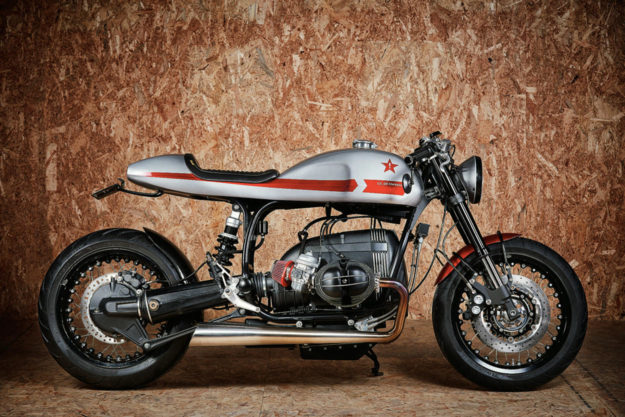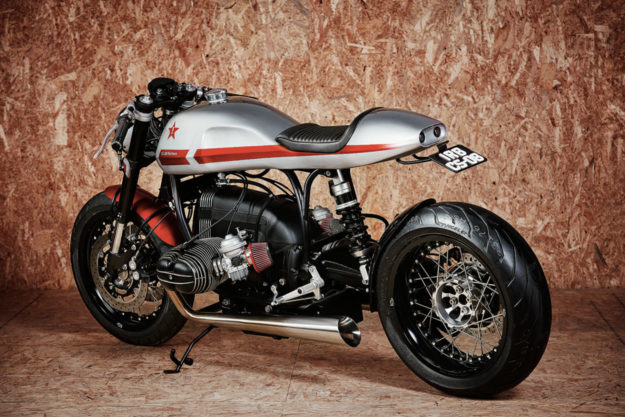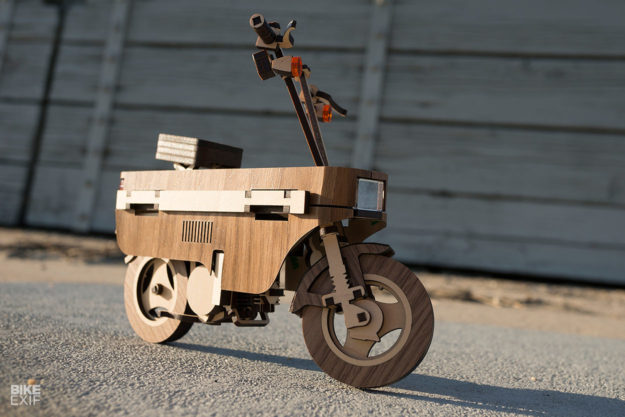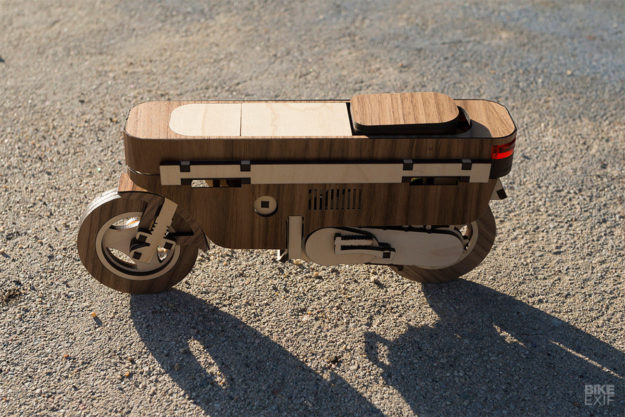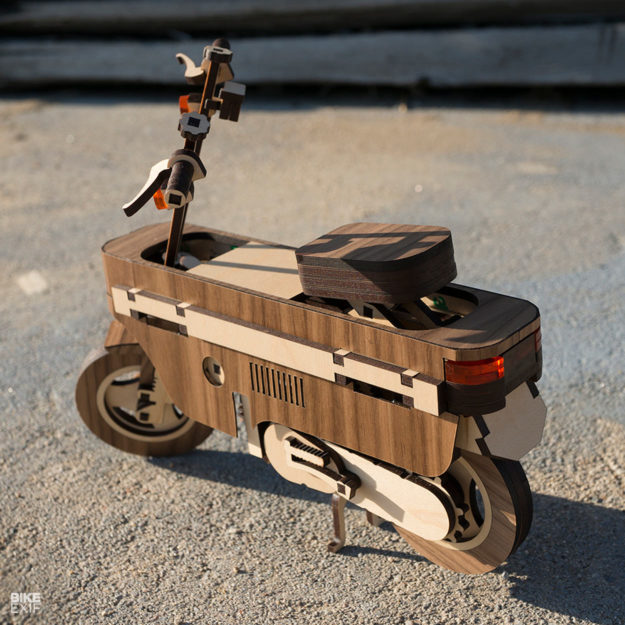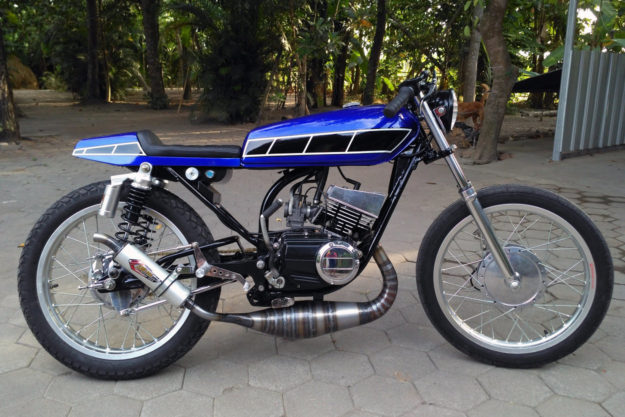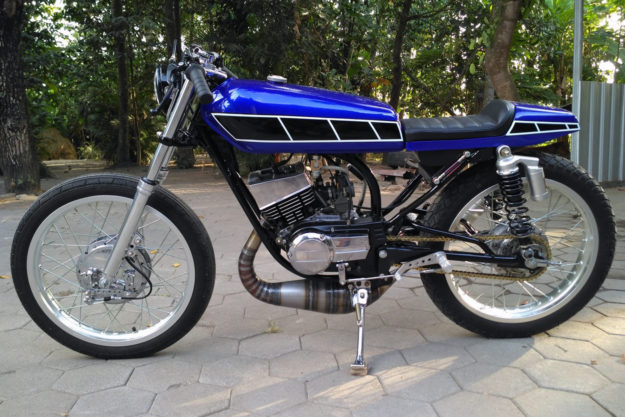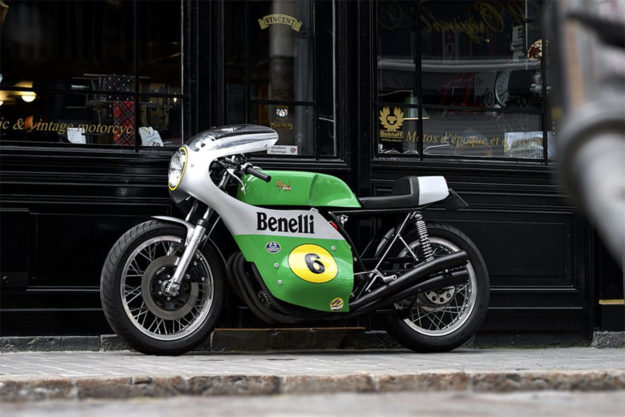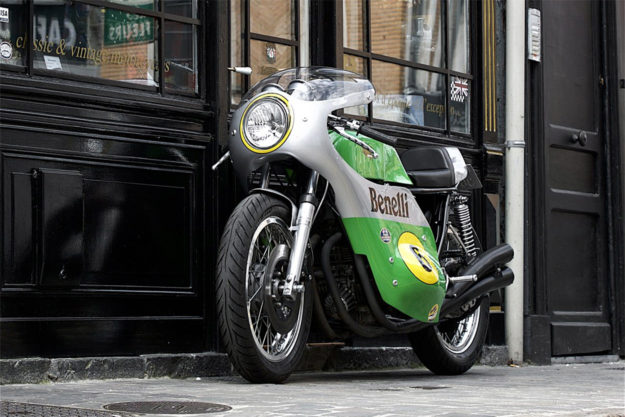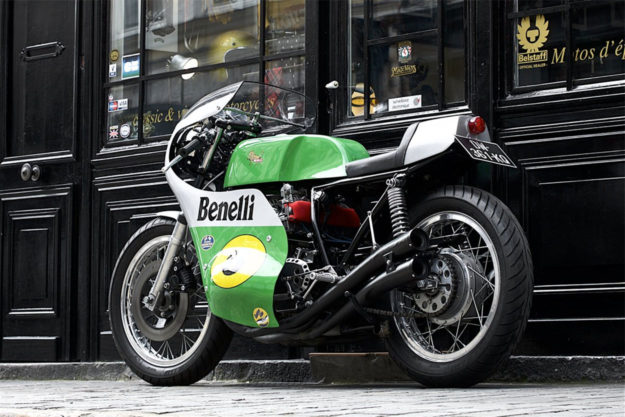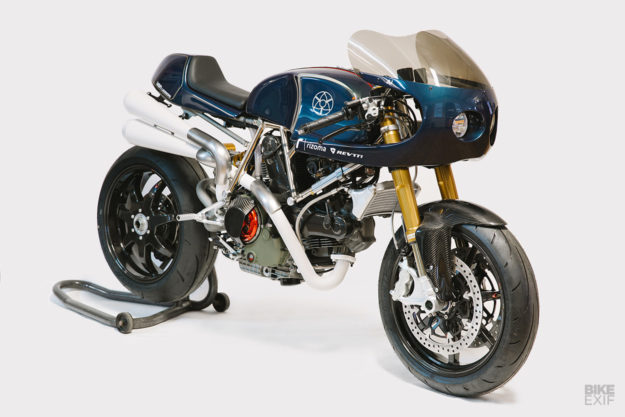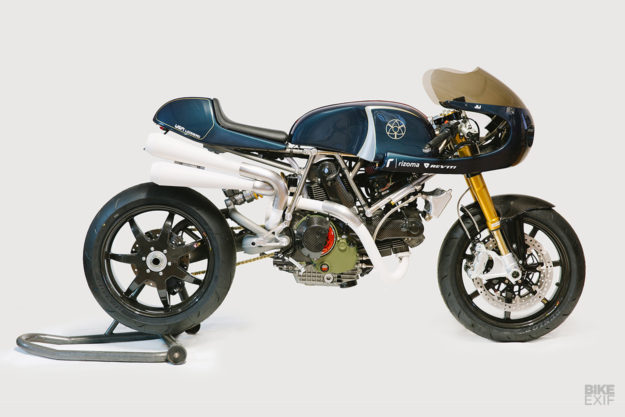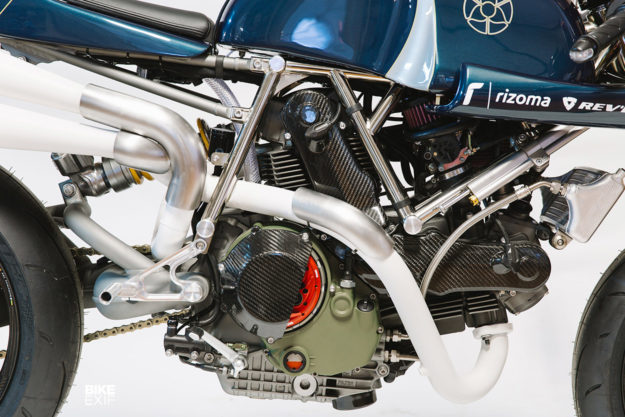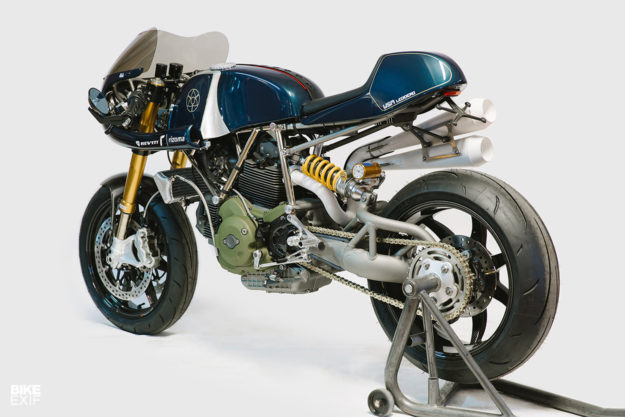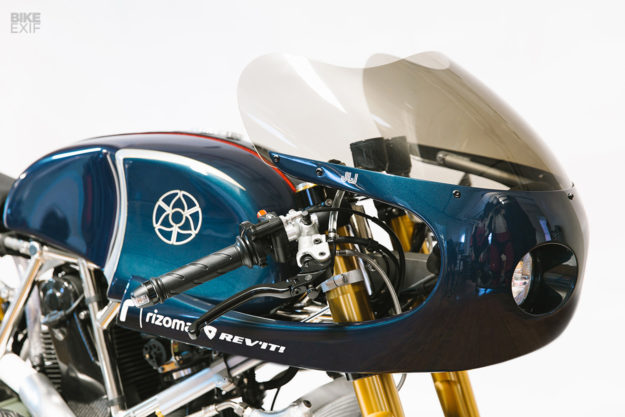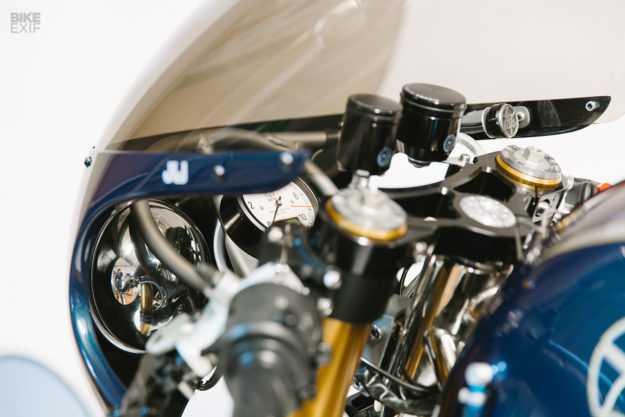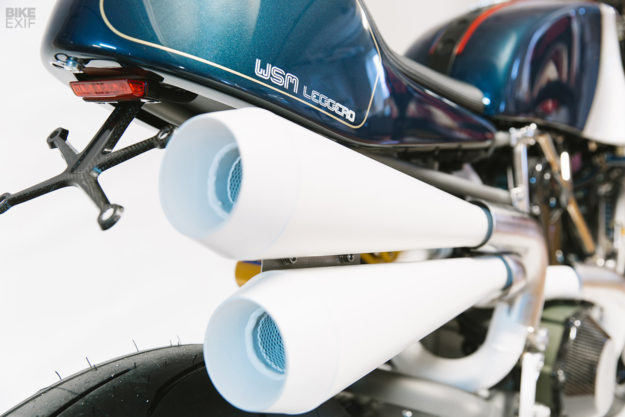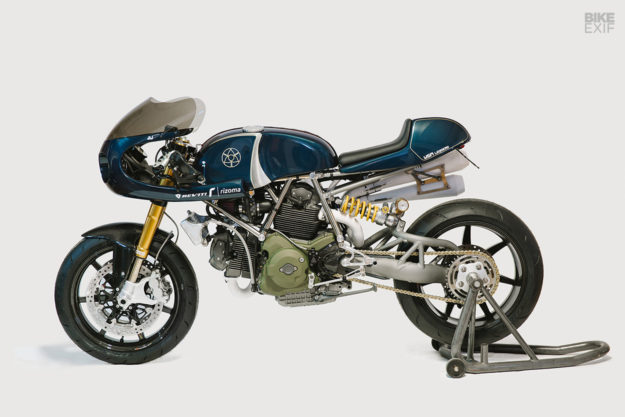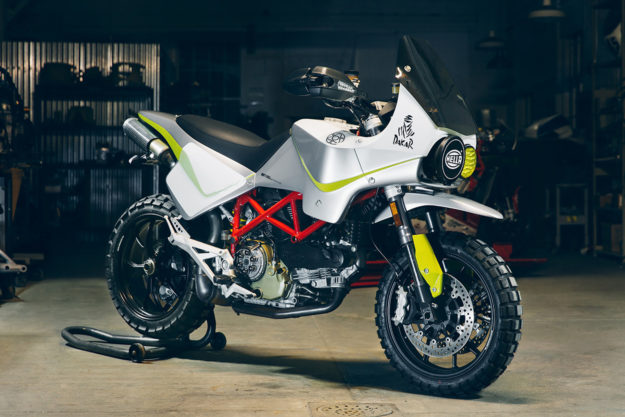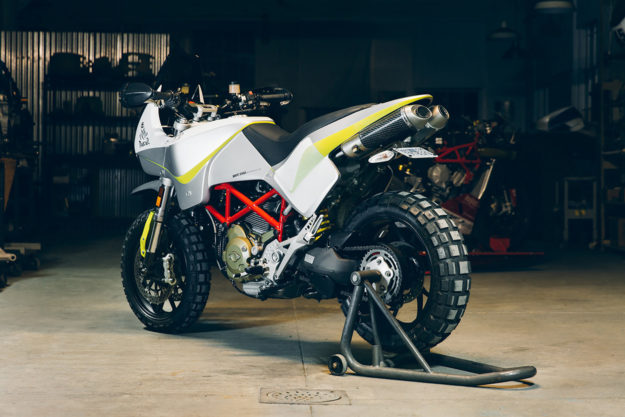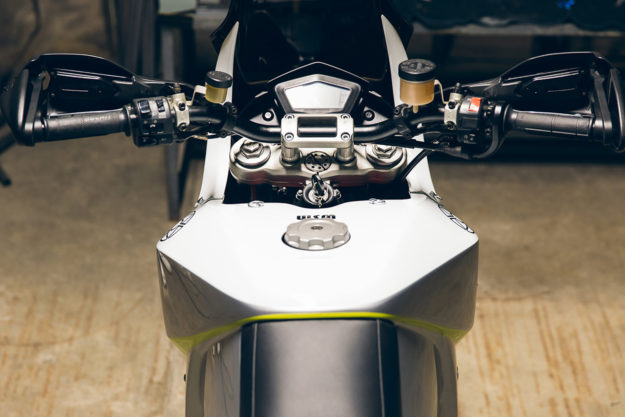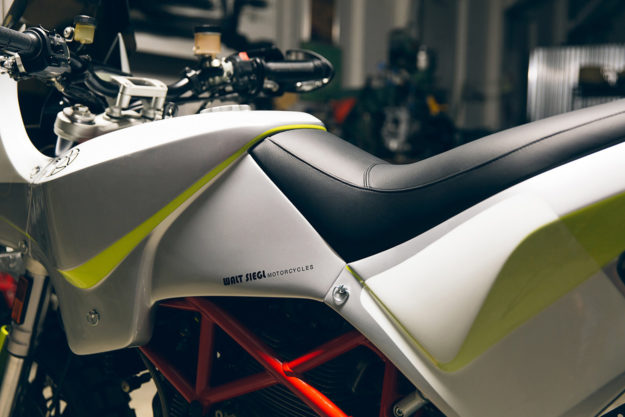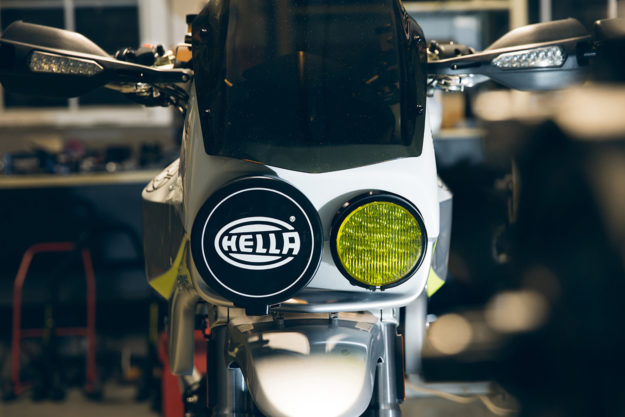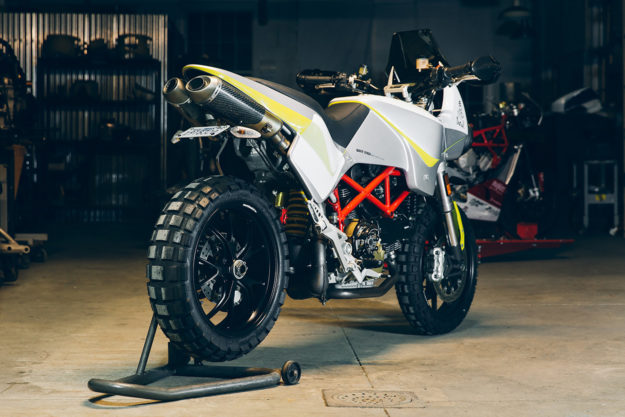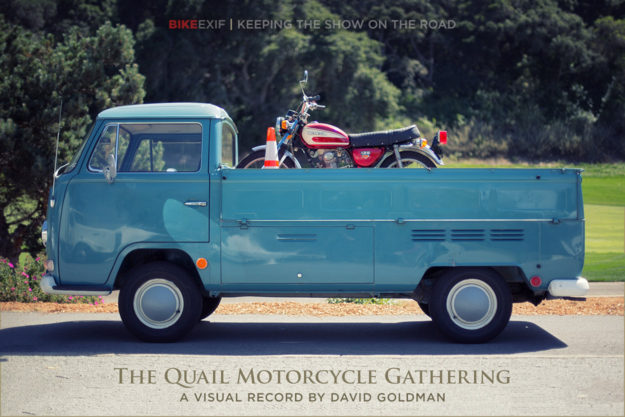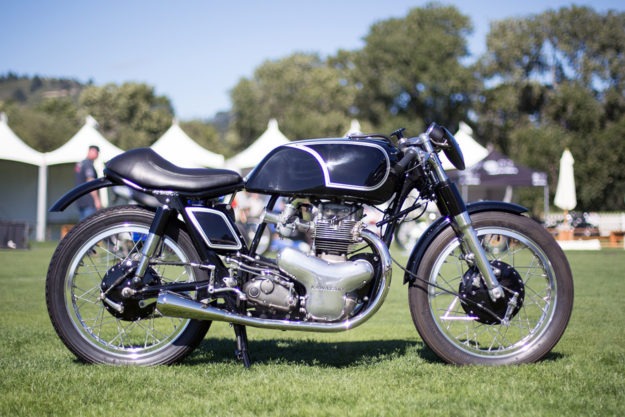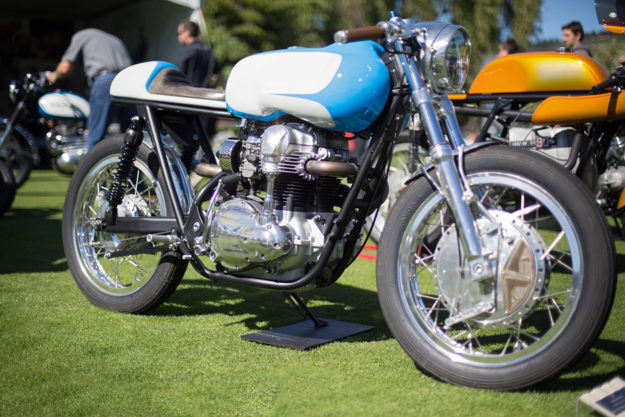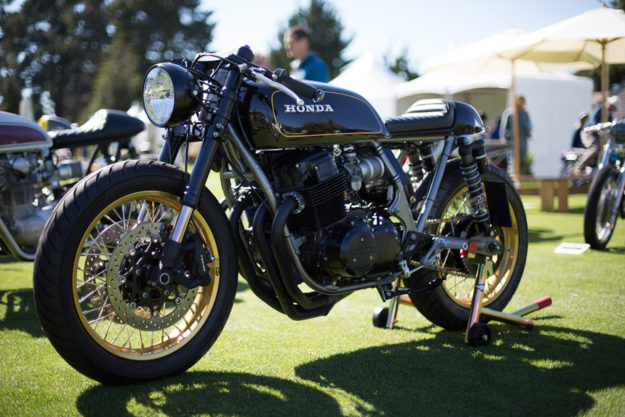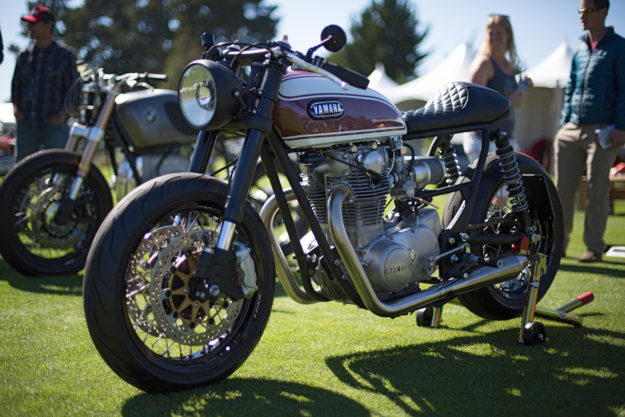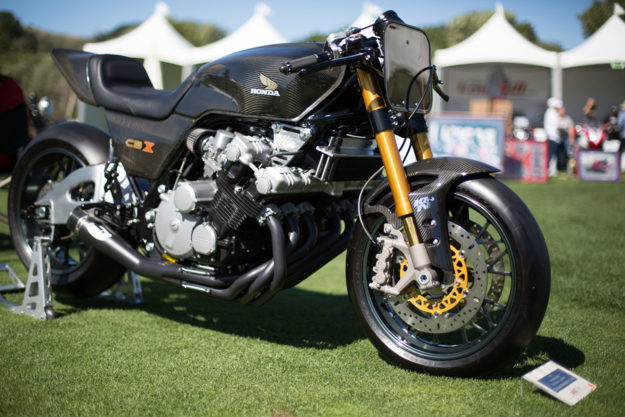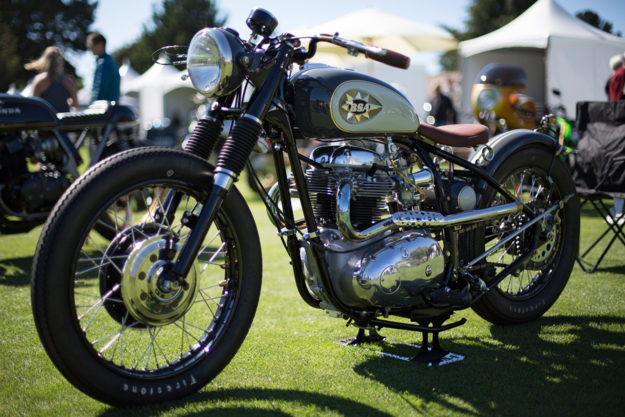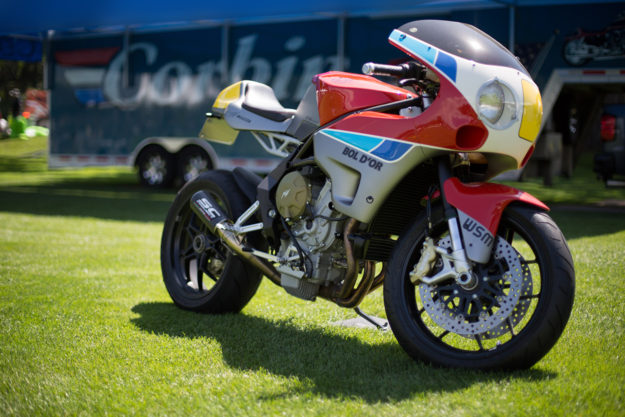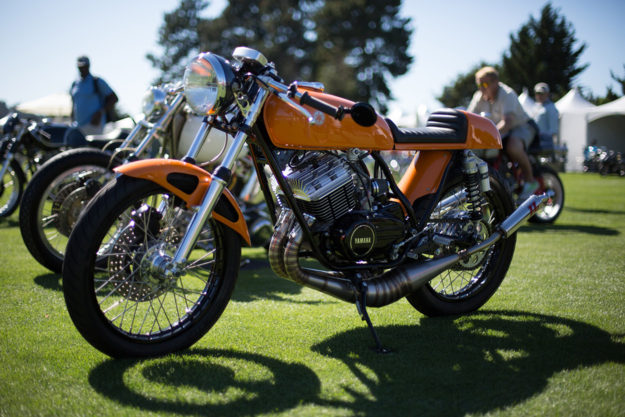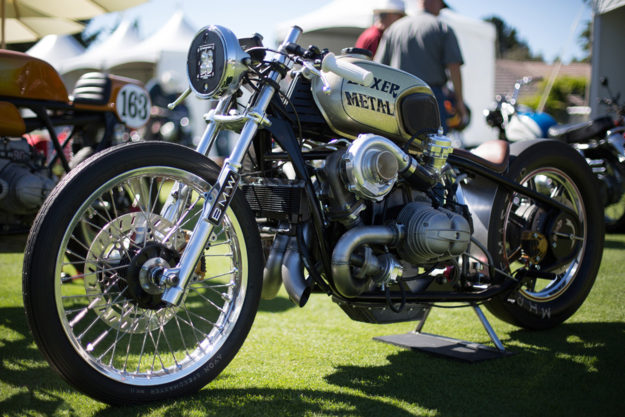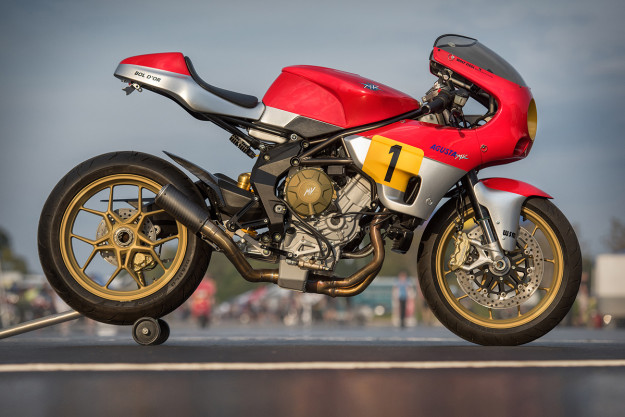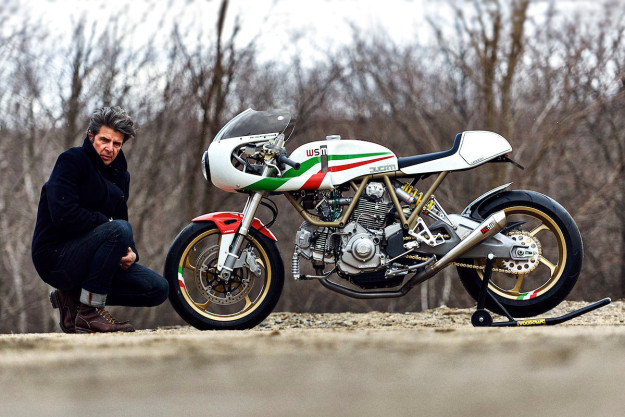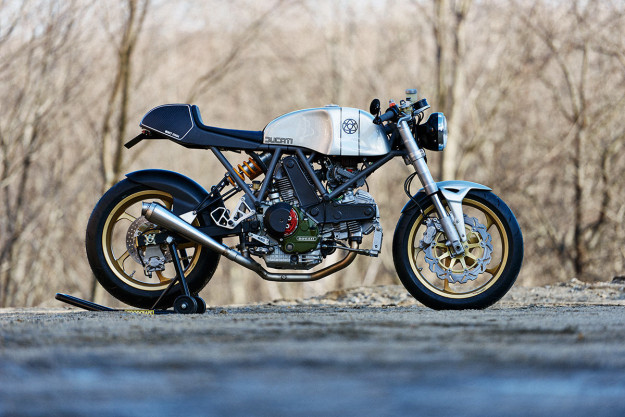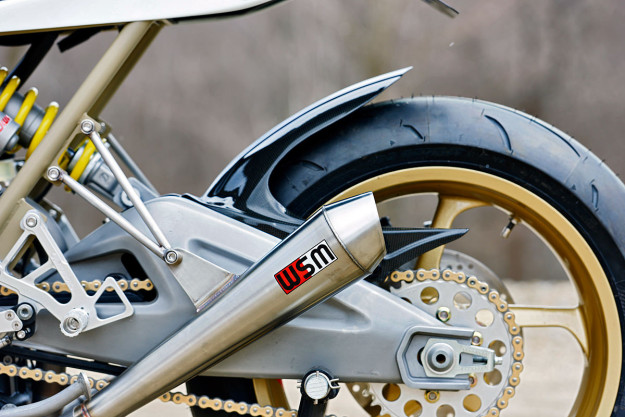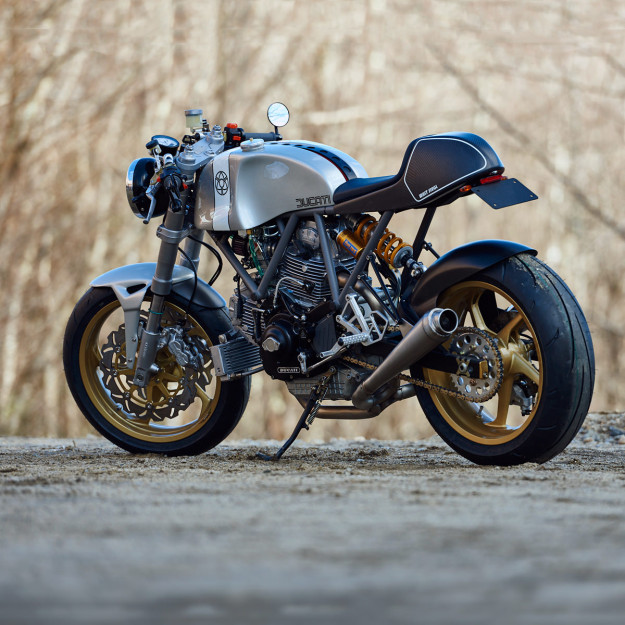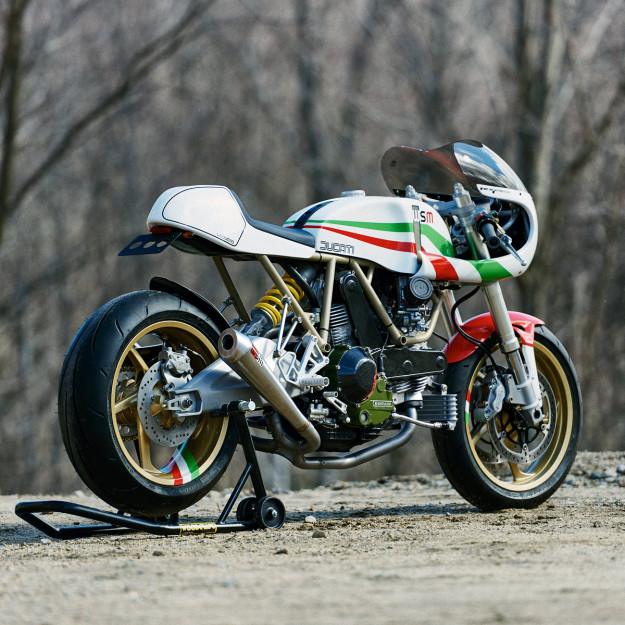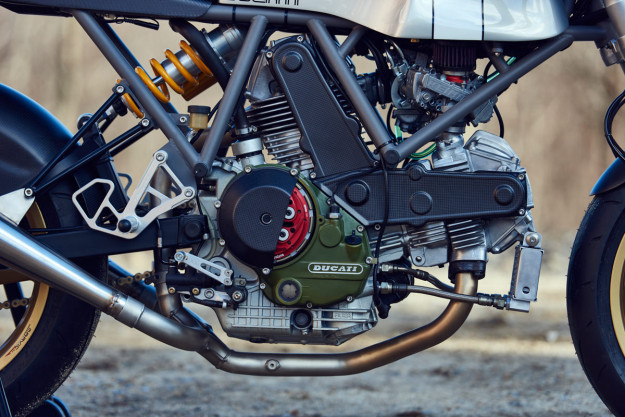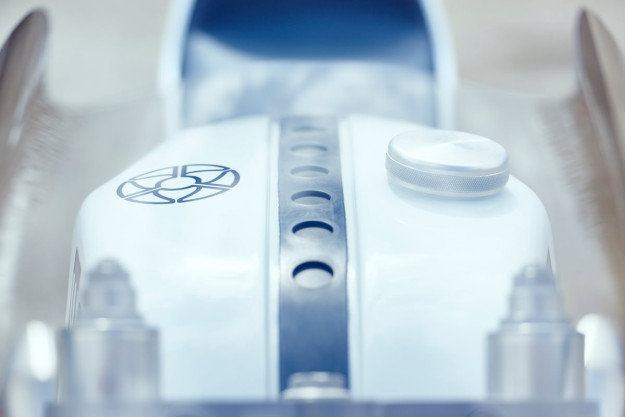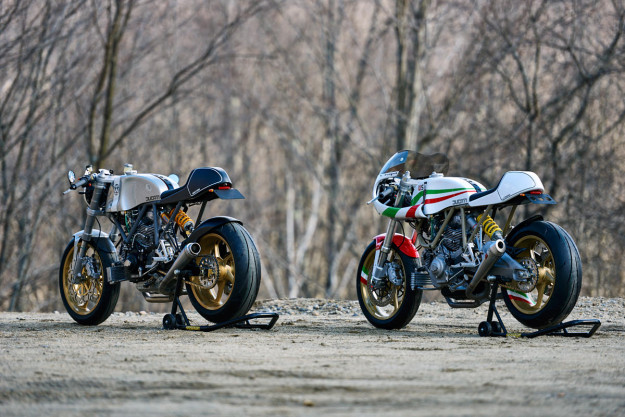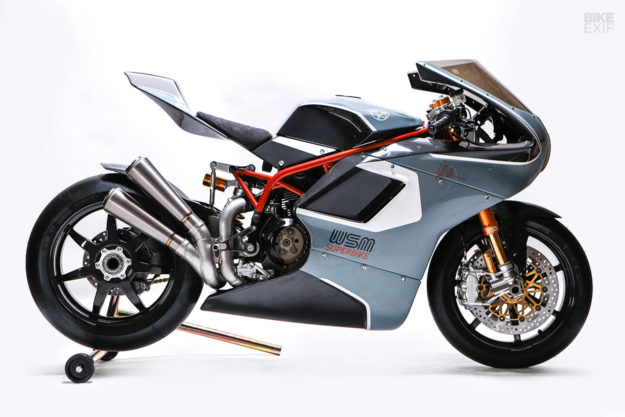
For us, the Holy Grail of bike building is mixing timeless design with modern technology. It’s easier said than done, and usually requires the full resources of a factory design team to make it work.
If you want a bike with OEM levels of fit, finish and functionality, but don’t want to go down the Triumph ‘modern classics’ or BMW heritage route, Walt Siegl should be at the top of your shopping list.
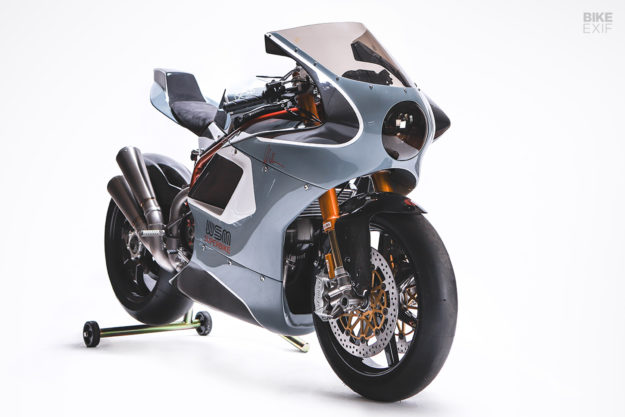
Walt specializes in Italian bikes, and this latest creation—the WSM ‘SBK’ #1—is one of his best yet. With help from his workshop team of Aran, Brian, and John, this superbike took Walt three long years to complete. And it shows.
“Nicholas, a dear friend and the owner of this bike, also owns a Bol d’Or and a Leggero,” Walt reveals. “He put down a deposit after my passionate descriptions of it over dinner, years ago.”
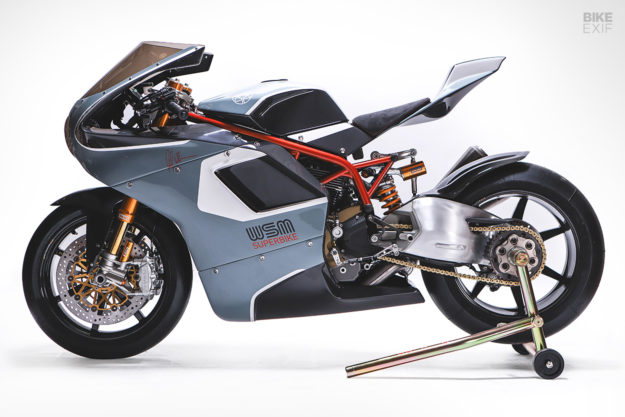
Nicholas’ patience and trust have been well-rewarded. “His enthusiasm throughout this three-year undertaking was vital to the completion of this model,” says Walt.
“The design of this machine is my romance with classic race bikes blending, I hope seamlessly, with modern technology and design,” he says. We think he’s got the balance exactly right, which is a relief—because an extraordinary amount of work has gone into the SBK.
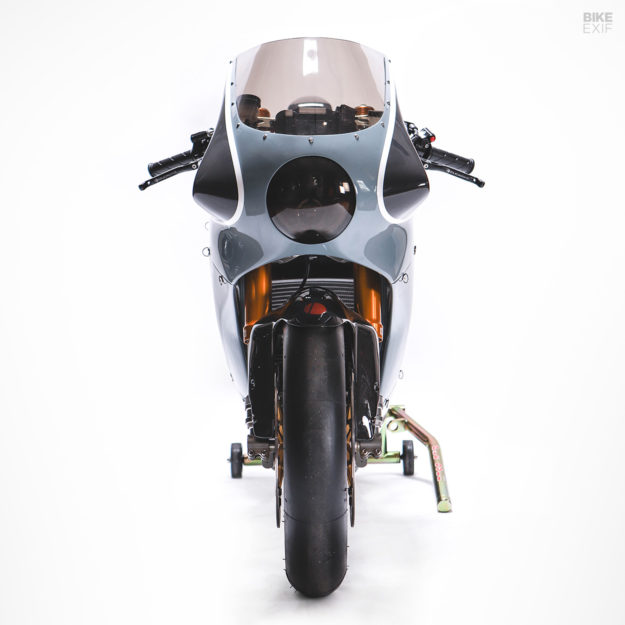
Walt wanted to build a Ducati superbike with a perimeter frame. And just to complicate matters, the frame needed to accommodate two different Ducati engine configurations: the air-cooled 2-valve, and the liquid-cooled 4-valve.
“I wanted to hold on to what is so dear to most Ducatistas,” says Walt. “The trellis frames, the rattling dry clutches, the torquey thrust of the long stroke motors. It’s a visceral experience.”
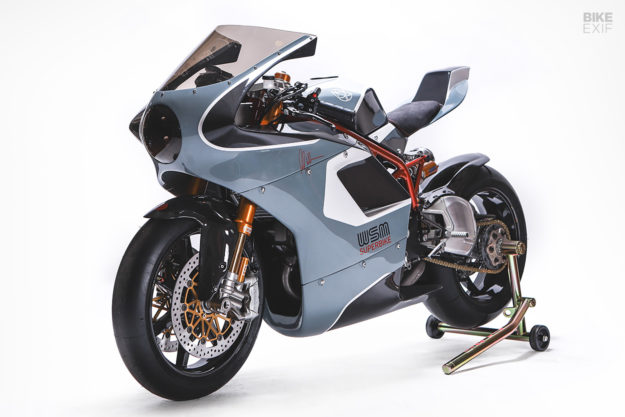
“Granted, all this involves the rider much more than other brands: Ducatis are kind of tender but very powerful at the same time. (It’s that special sauce.) They talk to you. They have a way of needing your attention when you ride them. They make you feel good. So I wanted to hold onto all of this.”
As you can imagine, the aircraft-spec chrome moly frame has involved more man-hours and brainpower than most complete custom bikes—but it’s given Walt a solid foundation for future superbike builds.

“It was paramount to build the bike as light and strong as possible,” says Walt, “using as few parts as possible.”
Most bikes have a steel subframe with a separate seat and tail section, but the subframe and tail here are one unit—made out of structural carbon fiber and weighing, unpainted, 1.8 pounds. That’s just over 800 grams.
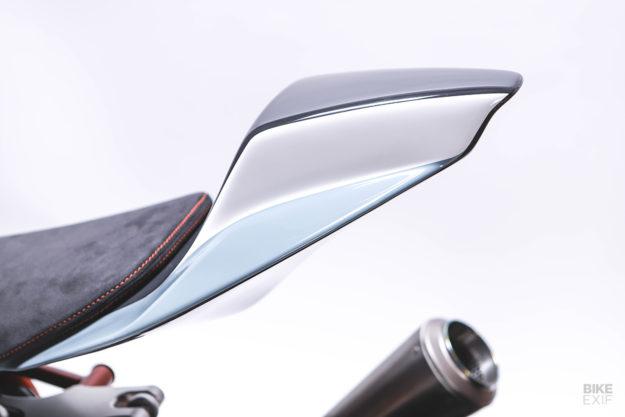
The geometry is based on World Superbike norms, to ensure precise handling and track-ready dynamics. “The combination of suspension components and geometry numbers is fully adjustable,” Walt notes. “It allows you to go from ‘street racer’ to a really quick-steering scalpel for the race track.”
The machine shown here has 2-valve power, but this is no off-the-shelf motor. Walt surrounds himself with a team of like-minded, perfectionist collaborators. So the motor was built by Bruce Meyers Performance, one of the best Ducati engine builders in the States if not the world.
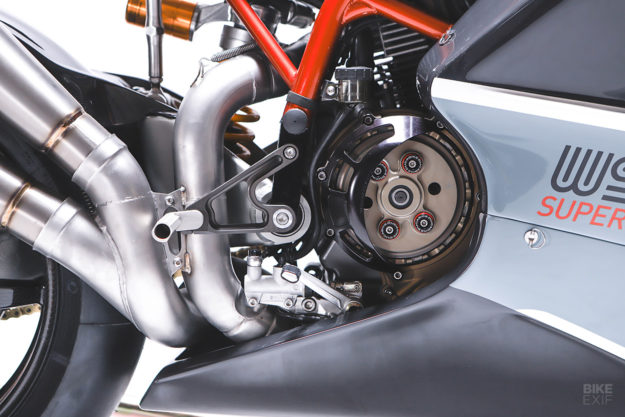
“It’s a hybrid,” says Walt. “The engine has an air-cooled top end with redesigned, CNC-machined combustion chambers. Plus oversized titanium valves, race cams, and short-sleeve Mahle pistons on top of titanium rods.”
The bottom end is from a 4-valve 1098, balanced and lightened with a polished, stainless crank. The exhaust headers are custom-made from stainless steel, and terminate with a pair of very sleek titanium mufflers from Arrow.
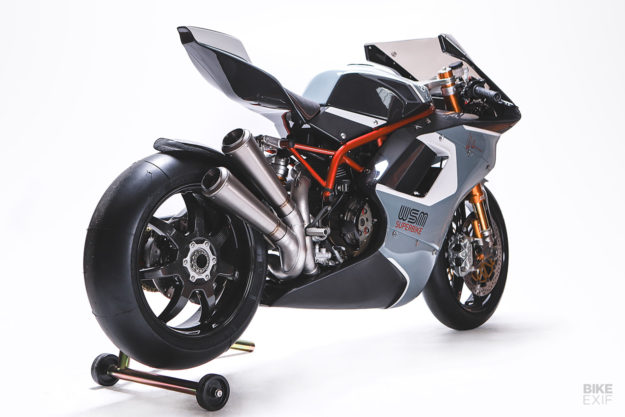
Walt’s designed the airbox (and the intake tubes hidden inside the fairing) to save weight, as well as maximize flow. So they’re crafted from carbon fiber, instead of injection-molded plastic, and the floor of the tank functions as a lid for the airbox.
It helps keep the weight of the superbike down to a remarkable 340 pounds (155 kilos). That’s fractionally lighter than Ducati’s current MotoGP bike and about 24 pounds (10 kilos) lighter than even the 1098 R showroom bike.
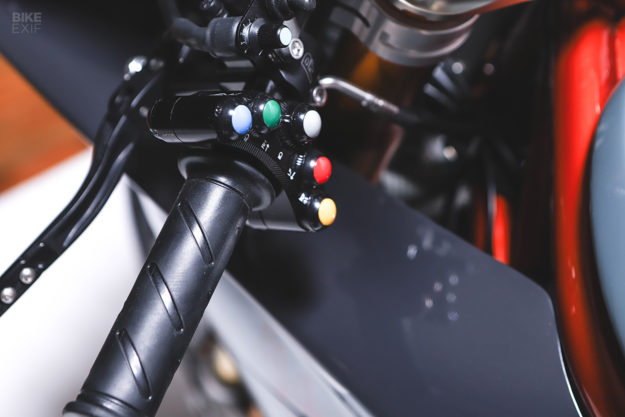
Custom electronics keep the engine in the sweet spot. There’s a Ducati ECU, but with WSM-specific programming, hooked up to a race-style wiring harness. Modern niceties such as traction control, and clutchless quickshifting are all present and correct, and track riders will enjoy the data acquisition system.
“I designed the bike from the ground up for high-output engines,” says Walt. “So our wiring harness had to include all the electronic necessities to control the power on the street and on the racetrack.”
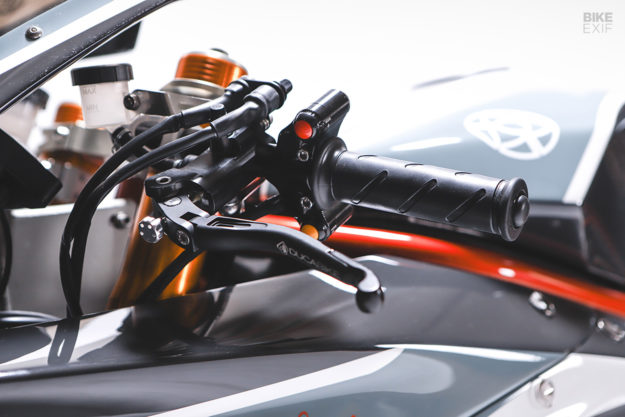
“The ECU is fully programmable to accommodate changes to the engine design and exhaust configurations.”
There is no risk of the power overwhelming the chassis. The suspension is Öhlins at both ends: FGR World Superbike-spec forks, a TTX shock built to Walt’s own specs, and a Ducati 1098 swingarm.
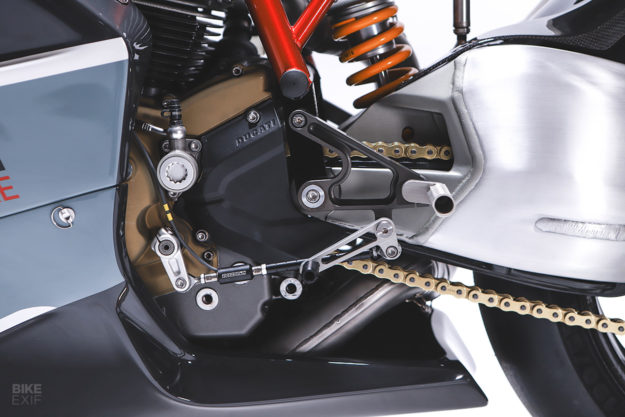
The brake system includes Brembo monobloc calipers, Brembo 330mm front rotors, and Spiegler Performance lines. The master cylinders are from Ducabike, and the wheels are carbon fiber Blackstone Tek items, shod with Metzeler slicks on this bike.
Even repeated braking at the end of the Mugello straight wouldn’t phase this superbike-style setup.
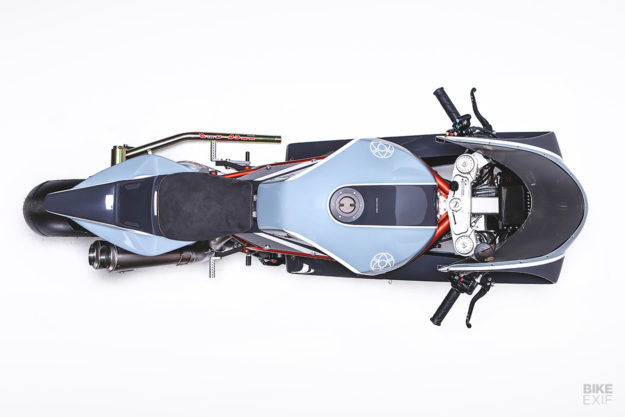
It’s all wrapped in beautiful bodywork shaped by the Vermont-based company Green State Carbon, fixed to the bike with aluminum stays and topped off with a custom windscreen by Gustafsson Plastics.
It weighs just nine pounds, thanks to the carbon fiber construction, and is finished in a simple livery designed by the client Nicholas with help from Paulo Rosas of Speed Machines Design. The lustrous blue-and-white paint was shot by regular WSM partner Peach Pit.

Despite the concours-level finish, this is a superbike meant to be ridden. “It behaves so differently to a showroom bike,” says Walt. “It is so agile and easy to steer, without feeling flighty, at the same time quite comfortable. That really caught me by surprise on the first test ride.”
“The weight saving efforts are really paying off, not only with the way the bike steers and feels under you, but also how well the brakes and suspension translate, and how effortless the acceleration is,” says Walt. “The experience is truly visceral!”
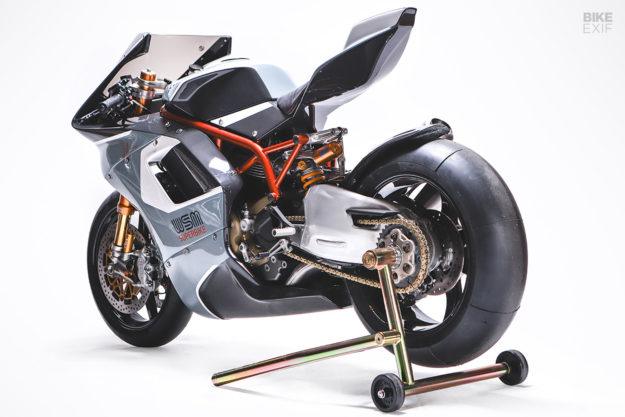
‘SBK #1’ reinforces Walt’s standing in the premier league of custom building. And it’s sure to pique the interest of anyone with a taste for Italian superbikes.
Time to buy that lottery ticket, perhaps?
Walt Siegl | Facebook | Instagram | Images by Gregory George Moore


